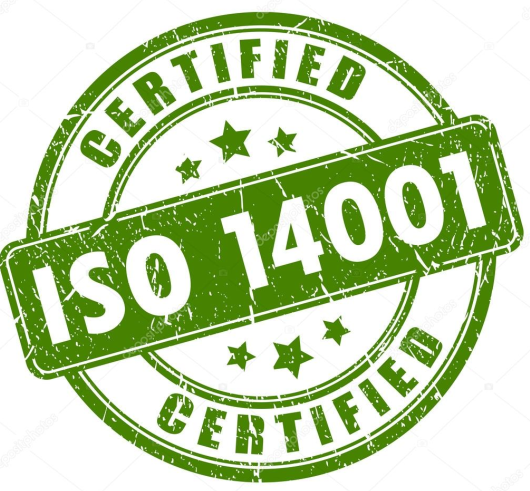In aviation and aerospace, sustainability means business
In part one, we examined the foundational theories that make up the overall concept of sustainability. We assembled the cornerstone with three areas in mind – environmental, social and economic. Through the readings we gained a better understanding of the terms and we related them to sustainability goals, exploring a few examples from the aviation/aerospace industry.
You may be thinking at this point that the information is all well and good, but how do we take the information from theory to application? Well, glad you asked! In part two, we will investigate each of the sustainability areas individually and correlate the information to the overall big picture of sustainability.
Remember a stool cannot stand on one or two legs, nor can a building be supported by one or two pillars. We have all heard the old analogy of “divide and conquer.” While the strategy is not to lessen the power or importance of any of the sustainability areas, dividing them up and reviewing them separately will assist you in comprehending the main points. Keep the pillars graphic in mind as we look at the individual pillars in this section.
Take a deep breath and jump in!
ENVIRONMENT
Let’s start by exploring the environment. We have all heard of environmental laws, and the goal is universal: protection of our natural resources whether the resource is water, air, or soil.
In the short article from Odyssey there are 5 Reasons Why We Need The Environmental Protection Agency:
- To make sure companies dispose of their hazardous waste properly
- The Clean Air Act
- The Clean Water Act
- To control climate change
- We need to protect the Earth for future generations
The reason number 5 is an important factor in sustainability!
While the previous list is specific to the US and the EPA, international laws are very similar in protection of the environment. For more information review this database resource to understand some of the international legislation and treaties in place. As it is quite robust, it’s nearly impossible to read through all the information, but skim through some of the resources to gain some insight into the breadth of the information.
So we have regulations and treaties, but how do we manage aviation/aerospace processes to ensure the myriad of regulations are met? You are probably familiar with the International Standards Organization (ISO) and such standards as 9001 for quality management. ISO leaders have also created ISO 14001 for Environmental Management Systems (EMS). The keyword is ‘system’ and its success is found by employing the Plan, Do, Check, Act cycle (or the Deming Cycle) for continuous improvement and change management, which is summed up below.
Aim of an environmental management system
The purpose of this International Standard is to provide organizations with a framework to protect the environment and respond to changing environmental conditions in balance with socio-economic needs. It specifies requirements that enable an organization to achieve the intended outcomes it sets for its environmental management system options for contributing to sustainable development by:
- protecting the environment by preventing or mitigating adverse environmental impacts;
- mitigating the potential adverse effect of environmental conditions on the organization;
- assisting the organization in the fulfillment of compliance obligations;
- enhancing environmental performance;
- controlling or influencing the way the organization’s products and services are designed, manufactured, distributed, consumed and disposed by using a life cycle perspective that can prevent environmental impacts from being unintentionally shifted elsewhere within the life cycle;
- achieving financial and operational benefits that can result from implementing environmentally sound alternatives that strengthen the organization’s market position;
- communicating environmental information to relevant interested parties.
Success factors
The success of an environmental management system depends on commitment from all levels and functions of the organization, led by top management.
Plan-Do-Check-Act model
The basis for the approach underlying an environmental management system is founded on the concept of Plan-Do-Check-Act (PDCA). The PDCA model provides an iterative process used by organizations to achieve continual improvement. It can be applied to an environmental management system and to each of its individual elements. It can be briefly described as follows:
- Plan: establish environmental objectives and processes necessary to deliver results in accordance with the organization’s environmental policy.
- Do: implement the processes as planned.
- Check: monitor and measure processes against the environmental policy, including its commitments, environmental objectives and operating criteria, and report the results.
- Act: take actions to continually improve.
Feel free to review the document more in depth at your leisure. My goal is to introduce you to how an EMS can be a valuable tool for organizations to meet environmental obligations and goals.
CO2 Emissions

We could not talk about the environmental pillar without taking a closer look at air quality and how aviation based activities contribute to CO2 emissions. Currently improving aircraft efficiency and operations are the goals to reducing emissions. Is it enough? Read through the following resources and you be the judge; to abstract the most important ones:
» In the reading from ‘US Aviation Greenhouse Gas Emissions Reduction Plan,’the goal of aircraft fuel reduction included in the ‘CLEEN’ program targets 33 percent reduction relative to current technology
» According to the Centre for Climate and Energy Solutions the CO2 emissions growth from global aviation, for the period 1990 to 2010 is about 40 percent
» In the National Geographic resource, the authors noted that 3-D printing could be used for cutting aircraft fuel consumption by printing brackets and hinges; fuel savings could also result from non-stick coatings designed to slough insect residue off jet wings (when bugs accumulate on the wings, they cause drag). And did you know that that aircraft account for 2 percent of all human-induced carbon emissions?
SOCIAL
Next, let’s move on to the social pillar of sustainability. What exactly do we mean when we talk about social sustainability? Group hugs or campfires? Seriously, social sustainability is the hardest segment to define.
"As a general rule, the goal is to improve the quality of life of a community, a region or even a country for current members and to ensure the ability to support future generations."
In aviation and aerospace, the communities are the numerous stakeholders who are internal members, external members, suppliers, customers, and public members that physically reside near an aviation or aerospace operation just to name a few. As with many industries, aviation and aerospace organizations are embracing the concept of Corporate Social Responsibility (CSR).
Okay, just what is CSR you ask? CSR is rooted in holding companies responsible as partners in promoting social change. Review this article from Business News Daily to further your understanding of CSR. We can see how
overall goal of Corporate Social Responsibility (CSR) is a way to hold corporations accountable for effecting social change with their business beliefs, practices and profits.
Ways to practice CSR:
- Environmental efforts
- Philanthropy
- Ethical labor practices
- Volunteering
Read this article, The Shift of the Airline Industry to Corporate Social Responsibility (CSR), about how the airlines are addressing CSR. Note the social initiatives of diversity, inclusion, equal opportunity, and humanitarian efforts.
In the readings below, you will discover how industry leaders are incorporating CSR into their operations. For example:
- Embraer has been the founder of a local Brazilian school. This accomplishment is part the company’s Corporate Social Responsibility actions
- Dassault Aviation includes social and gender equity as part of their Social Sustainability Strategy
- Lufthansa Group
- Astral Aviation
- British Airways
ECONOMIC

Now on to our last pillar, economic sustainability. At first glance, economic sustainability may seem to be focused on the individual organizations and their respective bottom lines. While this is true in part, true economic sustainability is much broader than the individual company.
Aviation growth must be managed properly to be sustainable. In this resource, Planning For Sustainable Aviation Growth, look for the keywords for airlines of profitable growth, cost control and connectivity. For example, airports approach economically sustainable growth by expanding in developing and emerging markets - and are often supported strongly by the regulating authorities as a means of providing strategic support to economic growth in a region or nation.
Remember the Sustainable Development Goals (SDGs) from Part 1? In this reading from Aviation Benefits we can see how aviation and tourism are often considered as two basic components of Sustainable economic growth. Tourism supports 284 million jobs and contributed 9.8% of global GDP in 2015; out of the 62.7 million jobs supported by the global aviation industry, over 36 million of these are aviation-enabled jobs connected to the tourism industry.
I will stop here with the readings for this section. Hopefully, by reading through the resources you have gained a better comprehension of the individual pillars of sustainability as well as gained insight to how all three must converge to find that “sweet spot” of true sustainability. Easy? No, but by setting the appropriate and incremental goals it can be done!
In the end you should check this video of three pillars in action, to completely get the hang of it:
KLM - Air France
JetBlue is thoughtful. The first 3 minutes and 45 seconds of the video are directly relevant to JetBlue’s CSR efforts.




Comments
Post a Comment